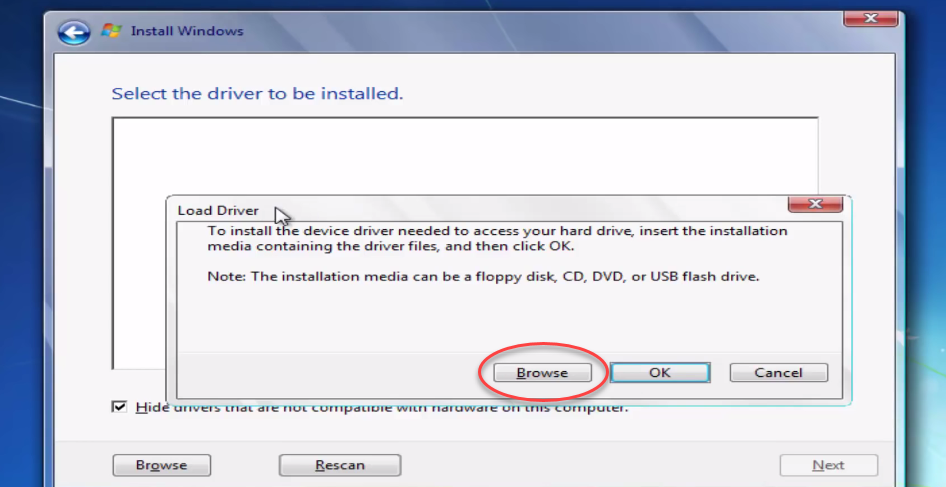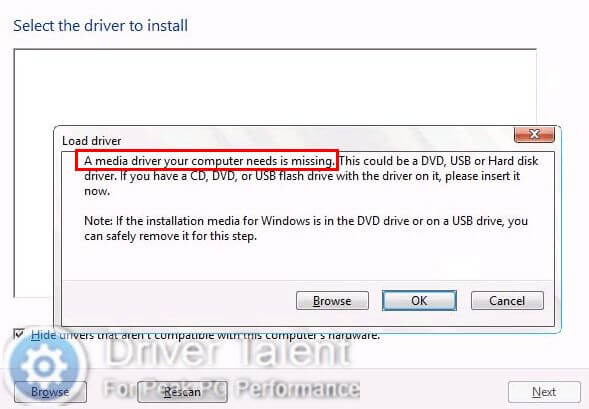

- #Windows 7 usb driver missing how to#
- #Windows 7 usb driver missing install#
- #Windows 7 usb driver missing software#
- #Windows 7 usb driver missing Pc#
- #Windows 7 usb driver missing windows 8#
If you see the drive in Disk Management, but it’s “Unallocated”, with a black bar along the top, this means that the drive is completely empty and unformatted. If You See the Drive in Disk Management, But It’s Empty Click “OK’ and it will appear in File Explorer or Windows Explorer with that drive letter. To assign a drive letter, click the “Add” button and assign a drive letter of your choice to the drive. Assign a driver letter and it should just work. You may see that the partition has no drive letter assigned to it.

If you can’t click “Change Drive Letter and Paths”, that’s because Windows doesn’t support the file system on the partition–see below for more information. To do this, right-click the partition on the drive in Disk Management and select “Change Drive Letter and Paths”. If the drive appears in Disk Management and you see one or more partitions on the drive–with a blue bar along the top–it may not be appearing in Windows Explorer because it needs to be assigned drive letters. If You See the Drive in Disk Management, and It Has Partitions
#Windows 7 usb driver missing install#
Use the “Update Driver” button to attempt to install an updated driver, click “Roll Back Driver” to roll back the driver to a previous one if it just stopped working, or use the “Uninstall” button to uninstall the driver and hope Windows automatically reinstalls one that will work. To fix driver problems, you may want to right-click the device, choose Properties, and head to the Driver tab. Search the web for this error message to find more information. You’ll see an error message with more information. If you see a device with an error icon, right-click it and select “Properties”.
#Windows 7 usb driver missing how to#
RELATED: How to Use the Windows Device Manager for TroubleshootingĮxpand the “Disk Drives” and “USB Serial Bus controllers” sections and look for any devices with a yellow exclamation mark on their icon. On Windows 7, press Windows+R, type devmgmt.msc into the Run dialog, and press Enter.
#Windows 7 usb driver missing windows 8#
On Windows 8 or 10, right-click the Start button and select “Device Manager”. To check for this, open the Device Manager. If other computers detect the drive when you plug it in, but your current computer doesn’t, it’s possible there’s a driver problem in Windows.
#Windows 7 usb driver missing Pc#
RELATED: How to Read a Mac-Formatted Drive on a Windows PC If Other Windows PCs Can See the Drive, But Your Current One Can’t It will appear as an empty drive that is now compatible with Windows. After you copy the files off the drive, you can agree to let Windows format (erase) the disk.
#Windows 7 usb driver missing software#
Alternatively, you can use software that lets you read Mac or Linux file systems in Windows. To read a drive like this one, you can either connect it to the Mac or Linux PC it was made on, and copy your files off of it onto another drive. If you don’t need the files on the disk, you can agree to format it–but be sure the drive doesn’t have any important files on it before you do. Don’t format the disk yet! This will erase any files on the disk. If you connect a drive with a foreign file system, Windows will tell you it needs format the drive before it can use it. For example, this can occur if you format a drive with the HFS+ file system on a Mac or with the ext4 file system on a Linux PC. If Windows can see the drive but can’t read it, it’s possible the drive was formatted with a file system Windows doesn’t normally support. If Windows Asks You to Format the Partition When You Insert It Here are a few possible solutions based on what you found when searching for the drive in Disk Management. Once you’ve performed the above steps, you’re in a better place to fix the problem. If not, move onto the fixes outlined below. Hopefully, one of these will solve your problem. If no computers see the drive when you connect it–even in the Disk Management window–the USB drive itself is likely dead.



 0 kommentar(er)
0 kommentar(er)
